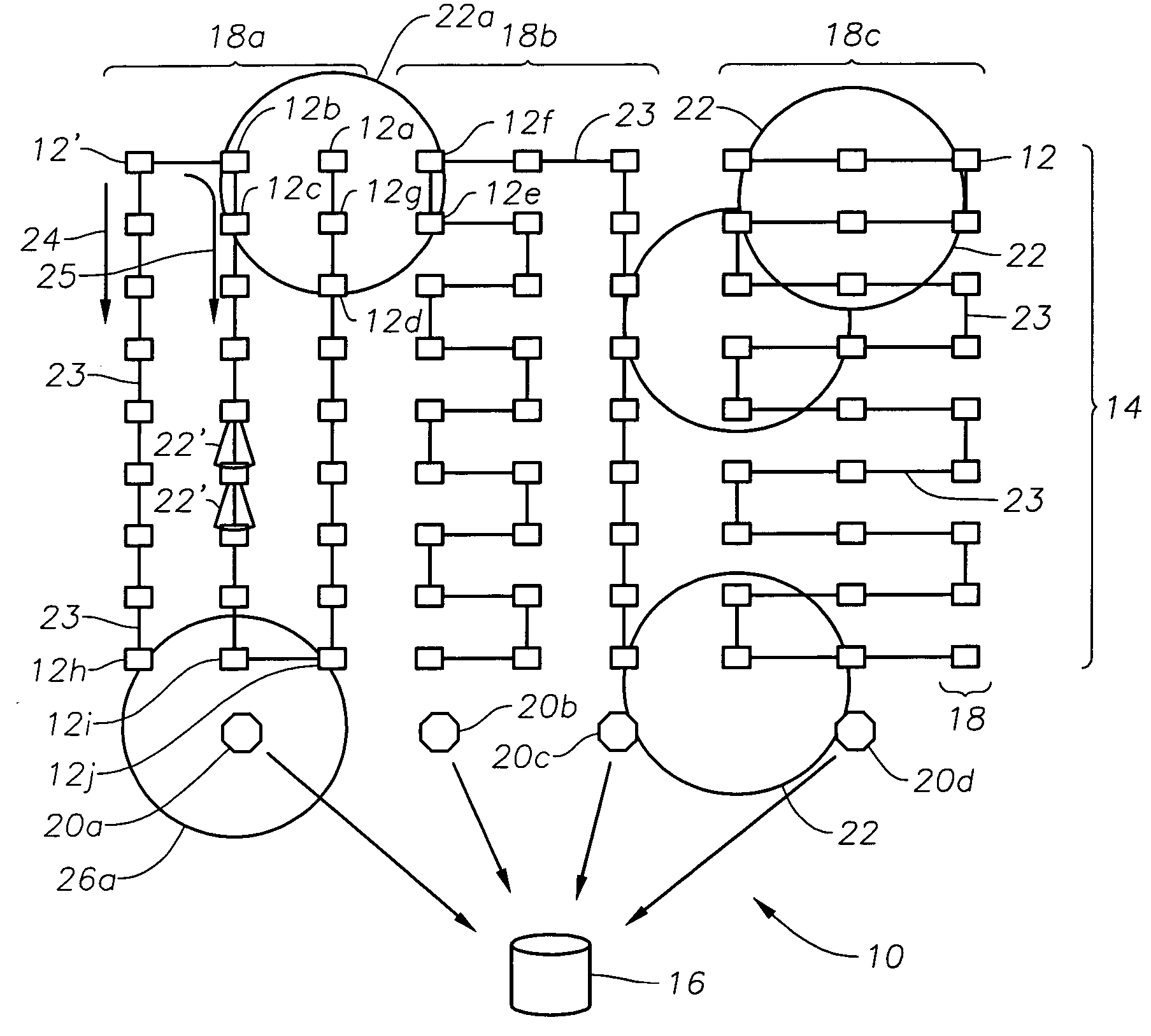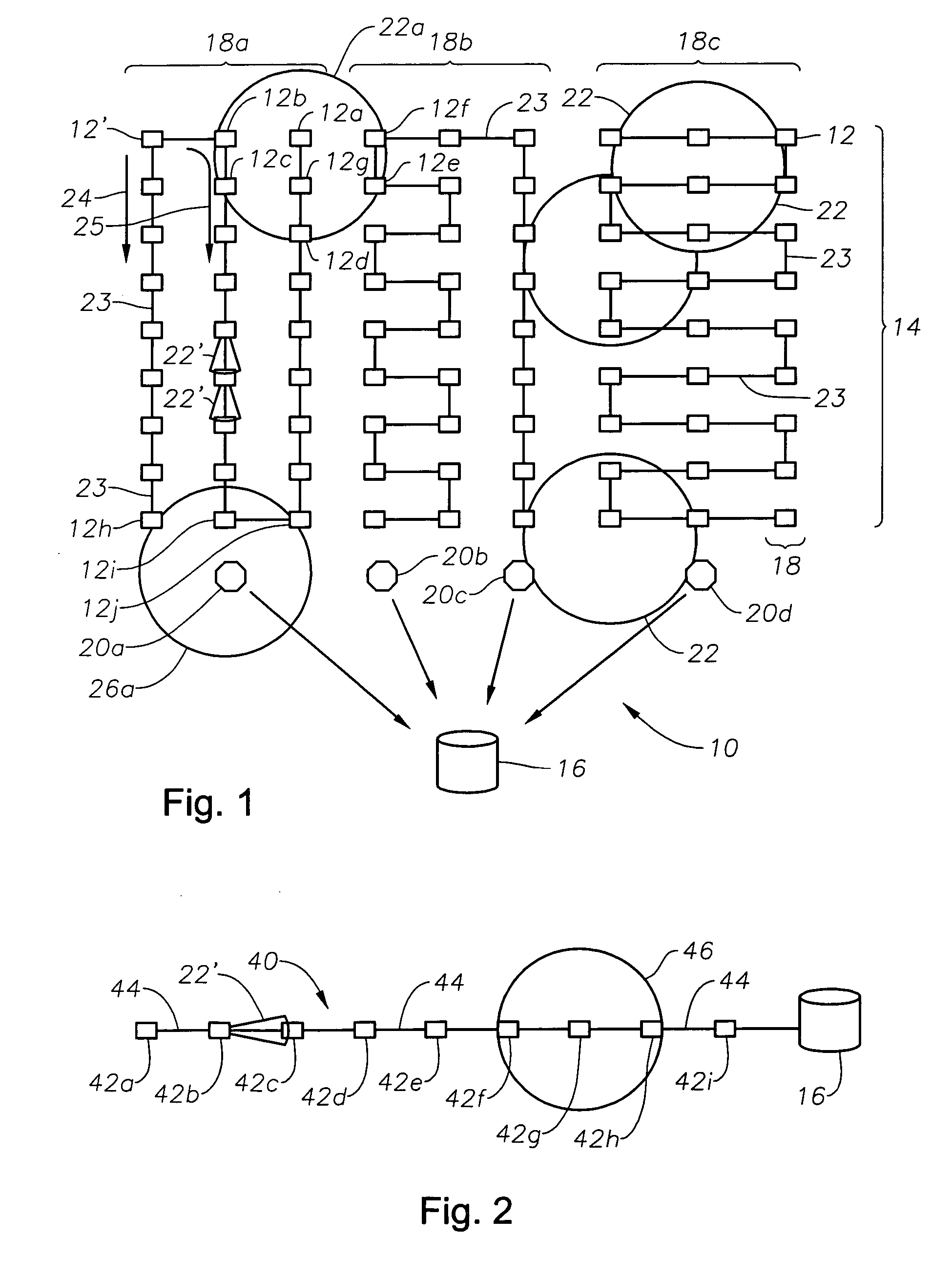Method and system for transmission of seismic data
a transmission method and seismic data technology, applied in seismic data acquisition, instruments, measurement devices, etc., can solve the problems of preventing communication with a plurality of seismic acquisition units, requiring larger battery packages, and requiring one intermediate transmission station or cell access node failur
- Summary
- Abstract
- Description
- Claims
- Application Information
AI Technical Summary
Benefits of technology
Problems solved by technology
Method used
Image
Examples
Embodiment Construction
[0023] In the detailed description of the invention, like numerals are employed to designate like parts throughout. Various items of equipment, such as fasteners, fittings, etc., may be omitted to simplify the description. However, those skilled in the art will realize that such conventional equipment can be employed as desired.
[0024] With reference to FIG. 1, there is shown a seismic data transmission network 10 of the invention. Transmission network 10 is comprised of a plurality of seismic acquisition units 12 spread out in a seismic array 14 and controlled by control station 16. Array 14 is formed of multiple lines 18 of acquisition units 12. Radio transmissions, and in particular, seismic data, are passed from seismic unit 12 to seismic unit 12 as the transmission is bounced through the network 10 to control station 16. In one embodiment of network 10, concentrators 20 are disposed between array 14 and control station 16. While the invention will be described in more detail wi...
PUM
 Login to View More
Login to View More Abstract
Description
Claims
Application Information
 Login to View More
Login to View More - R&D
- Intellectual Property
- Life Sciences
- Materials
- Tech Scout
- Unparalleled Data Quality
- Higher Quality Content
- 60% Fewer Hallucinations
Browse by: Latest US Patents, China's latest patents, Technical Efficacy Thesaurus, Application Domain, Technology Topic, Popular Technical Reports.
© 2025 PatSnap. All rights reserved.Legal|Privacy policy|Modern Slavery Act Transparency Statement|Sitemap|About US| Contact US: help@patsnap.com



